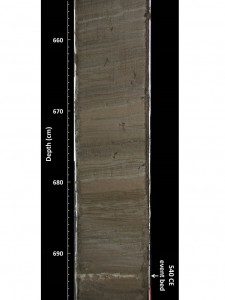Proxy
What is a proxy?

What makes researching the past so difficult is that we cannot go back in time to actually take measurements. Instead, researchers identify proxies, measurements that they can take in the modern day that can be used to determine what some condition was like in the past. This first requires finding some condition in nature that is affected by the climate when it forms, and then is preserved for a very long time. A good example is tree rings. Trees add a ring of growth every year, and years when the temperature and precipitation are favorable they grow more. By measuring the width of tree rings, scientists can identify “good” and “bad” growth years. To determine whether the harsh conditions were due to drought or an unusually cold summer a separate proxy must be used. Having a second proxy is also important to verify the first. Many proxies are tried based on theories, but to see if they actually work or not researchers need to either observe them being formed in the modern day, or have a different proxy in a similar time and place in the past to compare. By one of these experimental methods, the scientists can verify that the proxy actually works the way their theory predicted it would.
In our field of Paleotempestology (the study of ancient storms), we use sand layers as a hurricane event proxy. The sand layer represents a storm deposit due to overwash resulting from high waters or storm surge. Sand typically located along the barrier beach is transported by storm surge to a quiet pond located behind a barrier, where dark organic muds are deposited.
